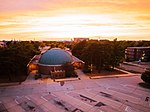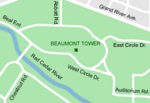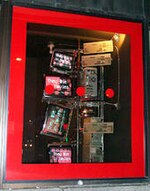Michigan State University (Michigan State or MSU) is a public land-grant research university in East Lansing, Michigan. It was founded in 1855 as the Agricultural College of the State of Michigan, the first of its kind in the United States.
After the introduction of the Morrill Act in 1862, the state designated the college a land-grant institution in 1863, making it the first of the land-grant colleges in the United States. The college became coeducational in 1870. Today, Michigan State has rapidly expanded its footprint across the state of Michigan with facilities all across the state and one of the largest collegiate alumni networks with 634,000 members.
Michigan State is a member of the Association of American Universities and is classified among "R1: Doctoral Universities – Very high research activity". The university's campus houses the Facility for Rare Isotope Beams, the W. J. Beal Botanical Garden, the Abrams Planetarium, the Wharton Center for Performing Arts, the Eli and Edythe Broad Art Museum, and the country's largest residence hall system.The university's six professional schools include the College of Law (founded in Detroit, in 1891, as the Detroit College of Law and moved to East Lansing in 1995), Eli Broad College of Business; the College of Nursing, the College of Osteopathic Medicine (the world's first state-funded osteopathic college), the College of Human Medicine, and the College of Veterinary Medicine. The university pioneered the studies of music therapy, packaging, hospitality business, supply chain management, and communication sciences.
University faculty, alumni, and affiliates include 2 Nobel Prize laureates, 20 Rhodes Scholars, 20 Marshall Scholars, 18 Churchill Scholars, 17 Truman Scholars, 5 Mitchell Scholars, 13 Udall Scholars, 53 Goldwater Scholars, 215 Fulbright Scholars, and 8 Pulitzer Prize winners. The Michigan State Spartans compete in the NCAA Division I Big Ten Conference. Michigan State Spartans football won the Rose Bowl Game in 1954, 1956, 1988, and 2014, and the university has won six national football championships. Spartans men's basketball won the NCAA National Championship in 1979 and 2000, and has reached the Final Four eight times since the 1998–1999 season. Spartans ice hockey won NCAA national titles in 1966, 1986, and 2007.







